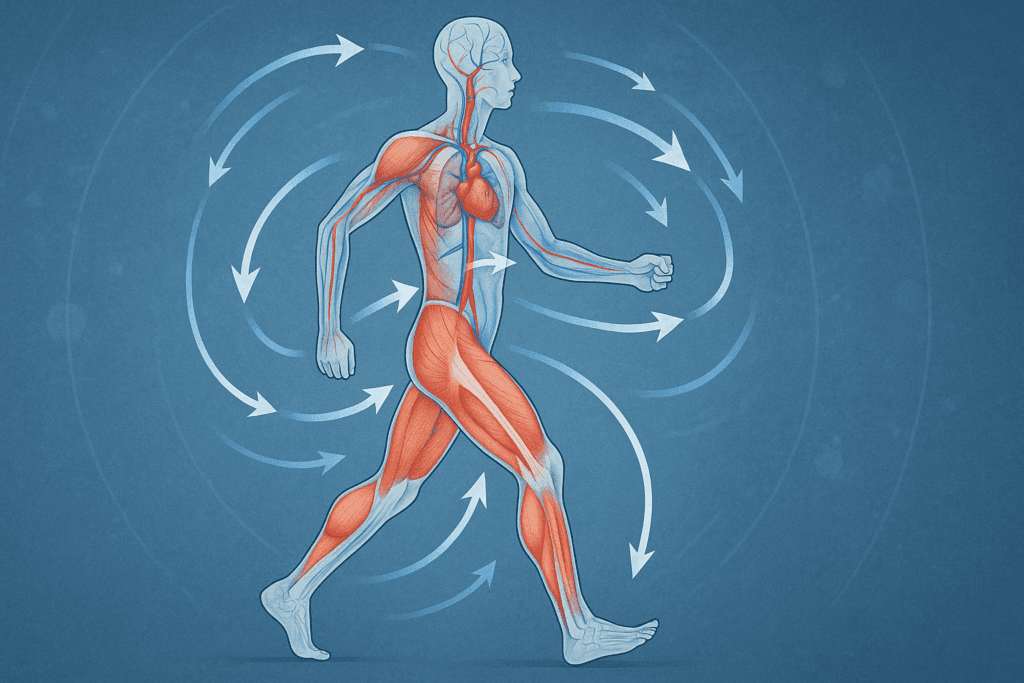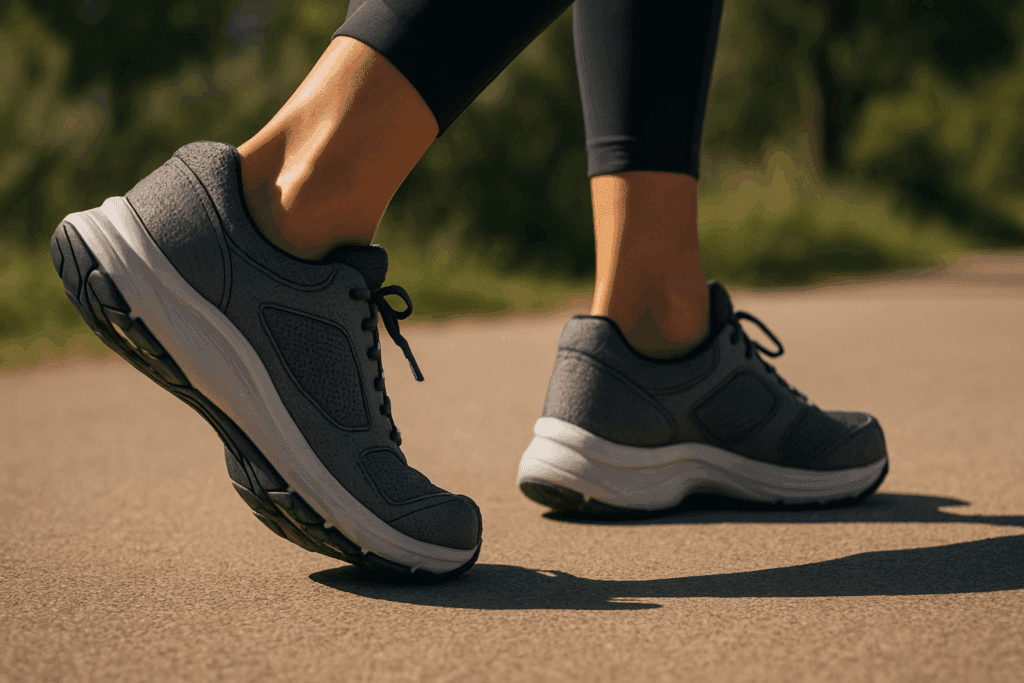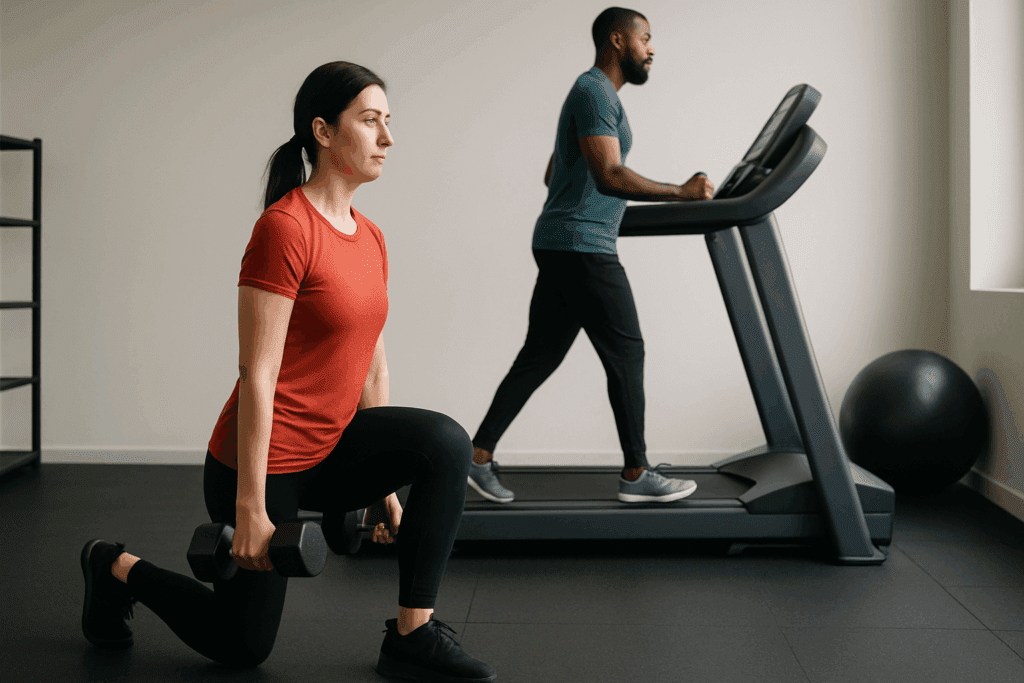Building walking stamina may seem straightforward, but doing it safely and effectively requires a combination of strategy, consistency, and evidence-based techniques. Walking, often underestimated as a fitness activity, holds immense potential for improving cardiovascular health, muscular endurance, and even mental resilience. For many, the journey begins with a simple question: does walking build stamina? The answer is a resounding yes—but only when approached with intention and understanding. In this comprehensive guide, we explore how to increase walking stamina naturally, drawing from expert recommendations and scientific principles to help you enhance your endurance while prioritizing long-term performance and safety.
You may also like: Build Running Stamina Fast: Best Exercises to Increase Endurance and Boost Performance Naturally

Understanding the Science Behind Stamina and Endurance
To increase walking stamina effectively, it’s essential to understand what stamina truly means in physiological terms. Stamina refers to the body’s ability to sustain prolonged physical or mental effort. When it comes to walking, this endurance is influenced by a combination of cardiovascular health, muscular strength, oxygen efficiency, and metabolic conditioning. Walking, as a low-impact aerobic exercise, engages large muscle groups, particularly in the legs and core, and stimulates the heart and lungs to work more efficiently over time.
Improving stamina through walking hinges on progressive overload—a fitness principle that involves gradually increasing the intensity, duration, or frequency of physical activity. The body adapts to these changes by enhancing oxygen uptake, increasing capillary density in muscles, and improving mitochondrial function. As a result, regular walking leads to improved energy levels, decreased fatigue, and increased overall endurance. So when one asks, does walking increase stamina?, it’s important to understand that the improvements are cumulative and rooted in physiological adaptation.
Moreover, stamina isn’t just physical. Mental endurance plays a crucial role in sustaining walking sessions over time. The mental discipline required to push through moments of discomfort, fatigue, or distraction can significantly impact one’s ability to stick with a routine. This mind-body connection forms the foundation of sustainable endurance training and should not be underestimated when developing a comprehensive stamina-building plan.

Establishing a Safe and Effective Walking Routine
The cornerstone of improving walking stamina safely lies in establishing a consistent, well-structured routine. Many beginners make the mistake of starting too aggressively, which often leads to burnout or injury. Instead, experts recommend beginning with a manageable walking schedule—for instance, three to five sessions per week, lasting 20 to 30 minutes each. As endurance improves, these sessions can be gradually extended in both time and distance.
To enhance walking stamina naturally, it’s important to vary intensity. Incorporating a mix of steady-state walks, brisk walks, and interval walking helps train different energy systems. For example, alternating between two minutes of fast walking and three minutes of a moderate pace challenges the cardiovascular system while preventing plateaus in stamina development. Over time, your body becomes more efficient at oxygen delivery and energy production, leading to noticeable improvements in endurance.
Equally vital is incorporating rest and recovery into your walking plan. Muscle fibers need time to repair and adapt to the increased workload, and walking on sore or fatigued muscles can do more harm than good. This is where listening to your body becomes critical. If soreness persists or fatigue feels overwhelming, it may be wise to take a day off or opt for a gentle recovery walk. Maintaining this balance is key to increasing walking stamina without risking injury.
The Role of Proper Footwear and Walking Mechanics
Although often overlooked, the quality of your footwear and walking mechanics can significantly influence your stamina. Shoes that lack proper cushioning, arch support, or flexibility can lead to joint discomfort, muscle strain, or blisters, all of which hinder long-distance walking. Investing in a well-fitted pair of walking or running shoes, ideally evaluated and recommended by a specialist, ensures that your feet and joints are adequately protected.
Walking mechanics also play a pivotal role in endurance. A natural, efficient gait minimizes unnecessary energy expenditure, allowing you to sustain walking for longer periods. Key components of good walking form include an upright posture, relaxed shoulders, a slight arm swing, and a heel-to-toe foot strike. Overstriding or slouching can lead to inefficiency and fatigue, which undermines stamina gains.
Regular gait assessments, either through video analysis or in-person observation by a physical therapist, can reveal subtle biomechanical issues that may need correction. Addressing these early on not only prevents injuries but also ensures that every step you take contributes effectively to your stamina goals. In this way, refining your walking technique becomes an essential component of any performance-enhancement strategy.

Nutrition and Hydration: Fueling Long-Term Endurance
Stamina building is not purely about physical activity—it’s equally dependent on proper nutrition and hydration. Muscles require a steady supply of energy to function optimally, and without adequate fuel, even the most well-planned walking routine will falter. Carbohydrates serve as the primary energy source for moderate to high-intensity walking, so including whole grains, fruits, and vegetables in your diet is crucial.
Protein, on the other hand, aids in muscle repair and recovery. Incorporating lean protein sources such as poultry, fish, legumes, and dairy helps ensure your body can recover efficiently between sessions. Healthy fats from sources like nuts, seeds, and avocados support joint health and provide a slow-burning energy source, especially for longer walks.
Hydration, often underestimated, is essential for maintaining blood volume, regulating body temperature, and preventing fatigue. Even mild dehydration can impair physical performance and cognitive function, making it harder to stay focused and motivated during long walks. Drinking water before, during, and after your walks helps maintain optimal performance and supports recovery. For particularly long or intense sessions, electrolyte drinks may be beneficial to replenish lost minerals and maintain stamina.

Does Walking Build Stamina for Other Activities?
One of the most frequently asked questions among fitness enthusiasts is whether walking translates to improved stamina in other physical pursuits. The answer lies in the principle of cross-training. Walking, while a low-impact activity, engages core aerobic mechanisms that are transferable to other endurance-based activities like cycling, swimming, and even running. This makes it a valuable tool not only for overall conditioning but also for rehabilitation and base training phases.
For those new to exercise or returning after an injury, walking offers a gentle yet effective way to rebuild foundational endurance without excessive strain on the joints. It enhances blood flow, strengthens supporting muscles, and improves balance—all of which are beneficial across various sports and physical activities. In essence, walking acts as a gateway to broader physical capability.
Furthermore, walking supports neuromuscular efficiency, coordination, and proprioception—key factors in sports performance. Regular walking can improve gait patterns, reduce asymmetries, and enhance lower-body stability, which may indirectly contribute to better performance in more dynamic, high-intensity movements. Thus, while walking may not mimic the exact demands of sprinting or heavy lifting, its role in holistic stamina development should not be underestimated.
Mental Strategies to Sustain Motivation and Progress
Maintaining walking stamina isn’t just about the body; it also requires a resilient mindset. Many individuals begin their walking routines with enthusiasm, only to lose momentum after a few weeks. This drop in motivation often stems from unrealistic expectations or a lack of tangible progress. Setting clear, measurable, and achievable goals is a powerful way to stay engaged and track your improvement.
For instance, aiming to increase your walk duration by five minutes each week or setting a monthly distance target can provide structure and purpose. Using fitness trackers or walking apps allows you to visualize your progress, reinforcing the connection between effort and result. These tools also offer social features, allowing you to join virtual walking groups or compete with friends, which can add an element of accountability and camaraderie.
Another effective technique is incorporating mindfulness into your walks. Paying attention to your breathing, surroundings, and bodily sensations can transform a routine walk into a grounding, meditative experience. This not only reduces stress but also enhances the mind-body connection, making it easier to push through moments of physical discomfort. Over time, this mental discipline becomes a valuable asset in your broader fitness journey.

How to Increase Walking Stamina Through Cross-Training and Strength Work
While walking itself is the primary mode of endurance building, integrating cross-training and strength exercises can accelerate progress and prevent overuse injuries. Activities such as cycling, swimming, or elliptical training can complement your walking regimen by working different muscle groups and energy systems without adding excessive joint stress. This variability also keeps your routine engaging and less monotonous.
Strength training is particularly beneficial for enhancing walking stamina. Stronger muscles improve walking efficiency and delay the onset of fatigue. Focus areas should include the glutes, hamstrings, quadriceps, calves, and core. Compound movements like squats, lunges, and deadlifts build foundational strength, while balance and stability exercises support joint integrity and coordination.
Additionally, flexibility and mobility routines, such as yoga or dynamic stretching, help maintain the range of motion in joints and muscles, further supporting stamina. A well-rounded program that incorporates walking, resistance training, mobility work, and low-impact cardio alternatives leads to more robust and sustainable improvements in endurance. In this way, increasing walking stamina becomes part of a holistic approach to physical well-being.

Tracking Progress and Adjusting Your Strategy
Measuring improvement is essential for maintaining momentum and ensuring that your stamina-building efforts are effective. There are various ways to track progress, depending on your goals. Some prefer to monitor distance or duration, while others may focus on pace or heart rate. Regardless of the metric, the key is consistency in tracking and interpreting the data within context.
Heart rate monitors and wearable fitness devices offer detailed insights into your cardiovascular response to walking. A lower resting heart rate or a quicker recovery time post-walk can indicate improved endurance. Similarly, the ability to walk longer distances at the same perceived level of effort reflects physiological adaptation. Keeping a training journal to document how you feel during and after each walk can also reveal patterns and help you fine-tune your routine.
As you progress, it’s important to periodically reassess your strategy. Plateaus are common in any training program and may signal the need for new challenges, such as adding hills, increasing pace, or incorporating resistance (like a weighted vest). Listening to your body and being willing to adapt your routine ensures that your stamina continues to build safely and effectively.
Frequently Asked Questions: How to Increase Walking Stamina Safely
1. Can walking help me prepare for high-altitude hiking or long-distance treks?
Absolutely. Walking is one of the most accessible ways to build a foundational endurance base, especially when preparing for more demanding activities like high-altitude hikes or extended treks. One of the best ways to learn how to increase walking stamina is to incorporate terrain variation. Practicing on inclines and uneven surfaces simulates trail conditions and strengthens the stabilizing muscles used in hiking. Additionally, increasing your walking distance gradually helps condition your cardiovascular system for lower oxygen levels at altitude. Pairing walking with breathing exercises and backpack training enhances both aerobic capacity and real-world readiness.
2. How can urban dwellers increase walking stamina when outdoor space is limited?
Living in a city doesn’t have to hinder your stamina goals. Many urban walkers focus on integrating walking into their daily commute or lunchtime breaks, which cumulatively improves endurance. Treadmill walking with variable incline settings can simulate outdoor terrain and provide a controlled environment to challenge your stamina. If you’re wondering does walking build stamina in indoor settings, the answer is yes—as long as intensity and consistency are maintained. Staircases in apartment buildings or office towers are also excellent tools for building leg strength and cardiovascular endurance. Listening to audiobooks or podcasts during walks can turn indoor sessions into immersive experiences, encouraging longer durations without boredom.
3. What are some unconventional but effective ways to build walking stamina?
One creative approach to increasing walking stamina involves adding resistance through wearable weights, such as ankle or wrist weights, or carrying a light backpack. This not only increases muscular demand but also simulates real-world conditions like hiking or walking with groceries. Another technique is to use interval walking while navigating city blocks or park paths, alternating fast and moderate paces. If you’re serious about learning how to increase walking stamina without traditional gym equipment, using nature-based challenges like sand walking, snow trekking, or walking against wind resistance can provide excellent stimulation. These unconventional methods stimulate neuromuscular pathways, diversify muscle engagement, and enhance adaptability, all of which contribute to long-term endurance.
4. Is there a psychological component to walking stamina, and how can it be trained?
Yes, mental endurance is just as critical as physical capacity. Sustained walking, especially over long distances, often involves pushing past temporary discomfort or boredom. Mental strategies such as goal-setting, visualization, and self-talk can strengthen psychological resilience. Many endurance walkers also practice mindfulness walking, which encourages presence and reduces perceived exertion. For those exploring does walking increase stamina holistically, it’s important to acknowledge that developing a growth mindset—where setbacks are viewed as part of progress—can significantly improve adherence and confidence in one’s abilities. Journaling your walking journey or using a mood tracker can also reveal emotional patterns tied to stamina plateaus or breakthroughs.
5. Can walking stamina improvements help manage chronic conditions like diabetes or arthritis?
Walking can be a powerful tool for managing chronic health conditions, and improving your stamina only enhances its benefits. For individuals with type 2 diabetes, consistent walking helps regulate blood glucose levels and improve insulin sensitivity. In arthritis patients, walking builds joint stability and reduces inflammation when performed at moderate intensity and with proper footwear. Knowing how to increase walking stamina safely allows these individuals to gradually expand their physical tolerance without triggering flare-ups or fatigue. Always consult with a healthcare provider before modifying your routine, but note that stamina-building walks can be tailored with short intervals and frequent rest to accommodate varying health needs.
6. How long does it typically take to see noticeable improvements in walking stamina?
While timelines vary based on fitness level, most individuals begin to notice improvements in walking stamina within three to six weeks of consistent effort. This may include being able to walk longer distances, recover more quickly, or feel less fatigue during routine walks. For someone just starting out, the first signs of progress might include better posture, a lower resting heart rate, or increased confidence navigating stairs. Asking does walking build stamina in the short term? can be misleading—the most sustainable gains occur when walking becomes a long-term habit. To accelerate improvement, walkers should aim for progressive overload by slightly increasing their weekly walking volume or intensity.
7. Is it possible to overtrain when trying to increase walking stamina?
Yes, despite walking being low impact, overtraining is still a possibility—especially when adding intensity or mileage too quickly. Symptoms of overtraining include persistent fatigue, irritability, joint pain, and disrupted sleep. A common mistake is underestimating the cumulative stress of frequent long walks without rest or recovery. For those eager to discover how to increase walking stamina, it’s crucial to allow muscles and connective tissue time to adapt. Cross-training with swimming or yoga, and incorporating rest days, helps the body regenerate and improves overall endurance. Rest is not a setback but a strategic component of any stamina-building program.
8. How can technology enhance walking stamina training?
Modern technology provides valuable feedback for anyone interested in how to increase walking stamina in a data-driven way. Smartwatches, fitness trackers, and smartphone apps monitor metrics such as heart rate, step count, elevation gain, and calorie expenditure. These insights help walkers fine-tune their pace, recovery, and progression strategies. Virtual challenges or guided walking programs offer structure and motivation, especially for solo walkers. For example, setting weekly mileage targets or joining virtual group walks can add a gamified element that enhances engagement. Technology also offers biofeedback options, allowing users to monitor stress levels and adapt training based on their body’s readiness.
9. Does walking build stamina differently depending on age or gender?
Physiological factors such as age and gender can influence how quickly and efficiently stamina improves, but walking remains universally beneficial across demographics. Older adults may require more recovery time and joint support but often respond well to low-impact endurance training. Meanwhile, women tend to metabolize fat more efficiently during aerobic exercise, which may support longer walking sessions. For both men and women, understanding does walking increase stamina differently based on life stage can help optimize training. Hormonal shifts, muscle mass distribution, and lifestyle patterns all play a role in stamina response. Tailoring walking routines with these factors in mind leads to more personalized and effective outcomes.
10. What role does community and social support play in increasing walking stamina?
Social support is a powerful motivator that is often overlooked in stamina training. Walking with a partner, group, or pet introduces accountability and reduces perceived effort. Research shows that people are more likely to stick with walking routines when they feel socially connected. If you’re exploring how to increase walking stamina while staying motivated, joining a local walking club or virtual challenge group can provide both encouragement and structure. Community also fosters positive reinforcement, shared goal-setting, and access to new walking routes or techniques. The emotional boost from shared activity can translate directly into improved physical endurance, turning a solo fitness goal into a shared lifestyle practice.
Conclusion: Unlocking Endurance Through Safe and Sustainable Walking Strategies
Walking may appear simple, but its power as an endurance-building tool is profound when approached with intention and care. For those wondering, does walking build stamina? or how to increase walking stamina without risking injury?, the evidence is clear: consistent practice, supported by sound training principles, proper nutrition, effective gear, and mental resilience, leads to real, measurable progress.
Understanding that stamina is a multifaceted concept—encompassing cardiovascular, muscular, and mental endurance—helps shape a more complete approach to training. Integrating walking with strength training, cross-training, and mindfulness not only enhances performance but also prevents burnout and injury. Just as importantly, monitoring your progress and adjusting your strategy ensures that your walking routine continues to evolve with your capabilities.
Ultimately, walking serves as both a foundation and a bridge—supporting long-term health, expanding physical potential, and inviting people of all fitness levels to explore the full spectrum of human endurance. Whether you are a beginner seeking to improve your daily energy levels or an athlete looking to boost aerobic capacity, walking offers a safe, accessible, and profoundly effective path to building stamina and enhancing performance naturally.
Was this article helpful? Don’t let it stop with you. Share it right now with someone who needs to see it—whether it’s a friend, a colleague, or your whole network. And if staying ahead on this topic matters to you, subscribe to this publication for the most up-to-date information. You’ll get the latest insights delivered straight to you—no searching, no missing out.

